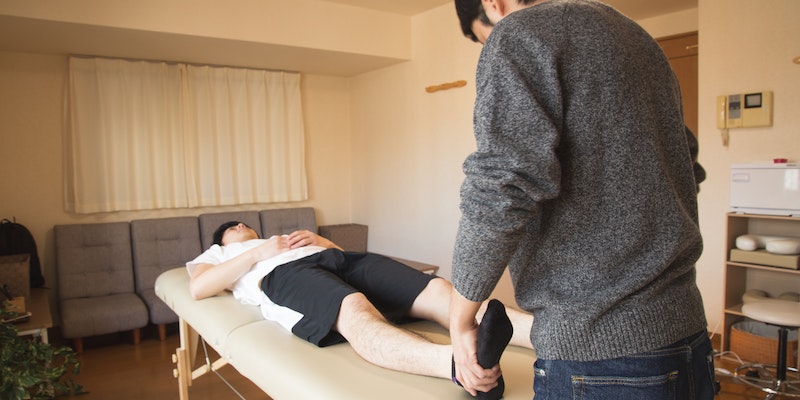Uncovering the Causes of Shingles
Oct 01, 2023
Chickenpox-causing varicella-zoster virus (VZV) reactivation produces shingles. Even while chickenpox is expected, not everyone develops shingles. About one million Americans contract shingles each year. Understanding what triggers the reactivation of VZV is vital for preventing and managing shingles effectively.
The Varicella-Zoster Virus: A Dormant Enemy
The varicella-zoster virus is known for its capacity to remain dormant within the human body. After an individual encounters chickenpox, typically in childhood, the virus does not altogether leave the body. Instead, it retreats to nerve tissues near the spinal cord and brain, lying in wait and potentially reactivating to cause shingles in the future.
Mechanism of Dormancy
The mechanism by which VZV enters a state of dormancy is complex. It embeds itself in the ganglia of nerves, away from the immune system's reach. Here, it may go unnoticed for decades. The immune system monitors the virus, but a breakdown in immunity could unleash it.
Factors Leading to Reactivation
Several conditions may reactivate VZV, according to research. Stress, immunosuppressive medications, and age-related immune reduction are examples. As the body's defenses fail, the virus replicates and travels along nerve pathways, causing inflammation and shingles symptoms.
Risk Factors for Reactivation

Age
One of the well-documented underlying causes is the advancing age. As individuals age, their immune systems naturally weaken, reducing the ability to keep the dormant VZV in check. This decline in immunity increases the likelihood of the virus reactivating, making individuals over 50 more susceptible to developing shingles.
Immunocompromised Status
Patients with impaired immune systems are at risk. Shingles is more likely with HIV/AIDS, chemotherapy, and organ transplants that require immunosuppressive drugs. Assessing shingles risk requires understanding how these illnesses and therapies affect the immune system.
Stress and Illness
Both emotional and physical stress have been identified as potential early shingles causes. Stress has a notable impact on the immune system, diminishing its functionality and potentially leading to the reactivation of VZV. Illnesses that compromise the immune system also contribute to the risk, emphasizing the importance of maintaining overall health to prevent shingles.
Recognizing the Symptoms
Shingles present distinct symptoms that typically begin with itching, burning, or tingling. These sensations, often painful, occur several days before the appearance of a rash, making early identification pivotal for effective management.
The Pre-Rash Phase
In the initial phase, individuals may experience discomfort, often in the form of pain, in localized areas of the body. This phase can perplex both the individual and healthcare providers, as the absence of a visible rash can lead to misdiagnosis. Being vigilant about these early symptoms is essential for timely intervention.
Development of the Rash
Following the initial sensations, a rash emerges, usually forming a stripe around the body's left or right side. The inflammation progresses into blisters filled with fluid, which eventually scab over. During this phase, individuals may experience additional symptoms such as fever, headache, chills, and upset stomach, indicating that shingles are contagious in adults, necessitating precautionary measures to prevent transmission.
Preventative Measures and Vaccination

Vaccination best prevents shingles, especially for older people and those with compromised immune systems. For people 50 and older or 19 and older with compromised immune systems, the Shingrix vaccination prevents shingles and its consequences over 90% of the time.
Shingrix: A Preferred Choice
Shingrix, approved in 2017, surpassed Zostavax as the preferred shingles vaccine due to its higher efficacy. Administered in two doses, Shingrix offers robust protection against shingles. Individuals who previously received Zostavax or had shingles are advised to get vaccinated with Shingrix to enhance their defenses against the virus.
Staying Vigilant
Even with vaccination, it is vital to remain vigilant to early shingles causes and symptoms. Regular health check-ups, maintaining a balanced lifestyle, and managing stress effectively are additional measures to fortify the body against the reactivation of the varicella-zoster virus.
Addressing the Contagious Aspect of Shingles
Shingles are contagious; thus, understanding this helps prevent its spread and protect vulnerable groups. Shingles patients must know how and when the virus can spread to avoid its space.
Are Shingles Contagious in Adults?
When pondering, "Are shingles contagious in adults?" the straightforward response is yes. Transmission occurs through direct contact with blister fluid, yet the individual exposed will experience chickenpox if they haven't previously, not shingles.
Protecting Vulnerable Populations
Minimizing virus spread is crucial, particularly around susceptible groups such as pregnant women, immunocompromised individuals, and newborns. These demographics are at a higher risk of developing severe complications from chickenpox, underscoring the importance of maintaining a safe distance until the shingles rash scabs over.
Maintaining Hygiene and Isolation
Adherence to strict hygiene practices, isolating the rash, and avoiding scratching are essential steps in mitigating the risk of virus transmission. These precautions help significantly reduce the possibility of infecting others, especially those more susceptible.
Addressing Complications and the Importance of Early Intervention
Awareness of potential complications from shingles is essential for prompt and effective treatment. Early detection and immediate medical attention are crucial to managing these complications and preventing long-lasting effects.
Identifying Complications
Complications such as postherpetic neuralgia, vision and hearing impairments, pneumonia, and, rarely, encephalitis or death can arise from shingles. Early recognition and immediate medical response prevent prolonged damage and improve recovery outcomes.
Postherpetic Neuralgia (PHN)
Postherpetic neuralgia is a prevalent complication, manifesting as enduring pain at the shingles rash site, persisting long after the rash has healed. Timely intervention and treatment are critical in managing PHN symptoms and enhancing the affected individual's well-being.
The Cruciality of Timely Medical Attention
Seeking medical guidance and initiating antiviral treatment within the initial 72 hours of rash appearance can notably lessen the intensity and duration of shingles, alongside reducing complication risks. Proactive measures, knowledge about shingles' causes, and immediate action upon symptom detection are vital components in efficiently managing this reactivated virus.
Containing the Spread
Shingles are contagious, particularly before the blisters scab over. Individuals with shingles should avoid contact with pregnant women, immunocompromised individuals, and infants, practicing good hygiene and keeping the rash covered to prevent transmission.
Conclusion
Shingle prevention and management require knowledge of its causes. Age, immune system weakness, and stress contribute to varicella-zoster virus reactivation. Vaccination, a healthy lifestyle, and early diagnosis are essential to prevent and treat shingles.





